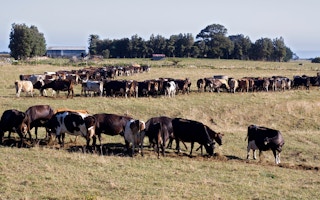With a mix of interest and occasional horror, I have observed our cultural conversations around food evolve over the past several years. I have watched as GMOs consumed the minds of millions, panicking us into believing we are poisoning ourselves with “frankenfoods,” despite GMOs being safe to eat.
All the while, savvy marketers use “non-GMO” labels to sell products at a premium, even when none of their included ingredients exist anywhere in a state of genetic modification. I watched organic become all the rage, with health ‘experts’ proclaiming anything else a sin against your body and those of your children, despite organic being a more expensive option than most people in the world can afford, and conventionally grown food offering the same health benefits.
For several years now, GMOs and organic have consumed America’s attention. It isn’t our interest in these topics that is the problem. After all, we do put these foods into our bodies! The problem is that our collective attention is spent so obsessively on these issues that it comes at the expense of everything else. It’s the everything else that has me concerned. We’re fretting over papercuts while we’re hemorrhaging out of our leg.
In our food and agricultural dialogues, too often someone waves around a hot button issue with little impact on the long-run, while issues that really matter lay neglected on the roadside. This happens to sell products, get your ‘click,’ gain political clout or procure your signature or donation. Sometimes it happens because of ignorance.
It isn’t that peripheral issues don’t matter. It’s that other issues matter so much more. If weather changes wrought by climate change destroy crops or we run out of water, we will literally die. Every food product we eat contains “invisible water” used during its growth.
Estimates vary from the 462 gallons of water for a quarter pound hamburger to the 308 gallons for an equivalent calorie content in a bowl of lentils. With beef, the majority of the water used (98 per cent) is to grow cow feed. For an adult cow, this is on the order of 30 pounds of hay per day. Only about 2 per cent of the 462 gallons of water required to produce the hamburger is directly consumed by or used on the animal. No one sees the amount of water that went into creating the food on their plate.
There are areas that heavily rely on groundwater drawn from underground aquifers. When more water is removed from an aquifer than is returned through the slow percolation of rainwater through the overlying soil, we say the groundwater is being “mined.” The Ogallala aquifer (covering Nebraska and seven other Great Plains states) has been mined to the point that water levels have declined over 200 feet since 1950.
“
In our food and agricultural dialogues, too often someone waves around a hot button issue with little impact on the long-run, while issues that really matter lay neglected on the roadside.
Additionally, in some areas such as in the San Joaquin Valley of California, the removal of substantial amounts of water resulted in a collapse of the aquifer structure as the water historically helped support the land above it. In such cases, the land surface subsides, reducing elevation and, even if all withdrawals are stopped, the aquifer will never hold as much water as it did before the collapse.
Combined with threats from contamination and climate change, the continued use of large-scale groundwater pumping is unsustainable in many locations and a threat to the long-term viability of regional economies. If we continue unchecked, water shortages will not only raise the prices in our grocery stores significantly, but we may face major food shortages.
Given that we have a finite amount of attention and outrage to give, we need to look at this passion like we do water—a precious and limited resource. We need to allocate it accordingly. While topics like water and climate change are perhaps not quite as eye-catching as ‘frankenfoods’ or organic, they are brutally essential to our survival as a species. When it comes to food security for ourselves, for the less privileged of the world and for our future generations, we are going to need to rustle up just as much outrage over water security and climate adaptation as we do over GMOs and organic food. And we need to do that right now.
Jessica Eise is the co-editor of How to Feed the World and co-author of The Communication Scarcity in Agriculture. She is a Ross Fellow in the Brian Lamb School of Communication’s doctoral program.









